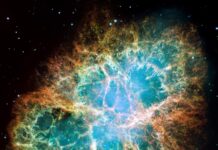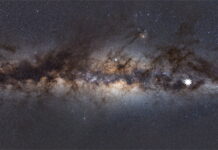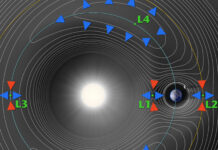Bu yıldız, toz ve gazdan oluşmuş devasa dönen kütle yakınımızdaki sarmal bir galaksinin merkezinden bir görüntü.
Bu muhteşem sarmal galaksinin adı NGC 3521 ve aslan takımyıldızı doğrultusunda tam 35 milyon ışıl yılı uzağımızda yer alıyor. Yaklaşık 50,000 ışık yılı genişliğindeki galaksinin bu merkez bölgesinin harika görüntüsü Hubble Uzay Teleskobundan elde edilmiş datalarla oluşturulmuş. Bu yakın çekim görüntü galaksinin yamalı, düzensiz, tozla kaplı sarmal kollarıyla; genç mavi yıldız kümelerini gösteriyor. Bu arada görece parlak bir galaksi olan NGC 3521 küçük teleskoplarla dahi görünebilecek bir formdadır.











